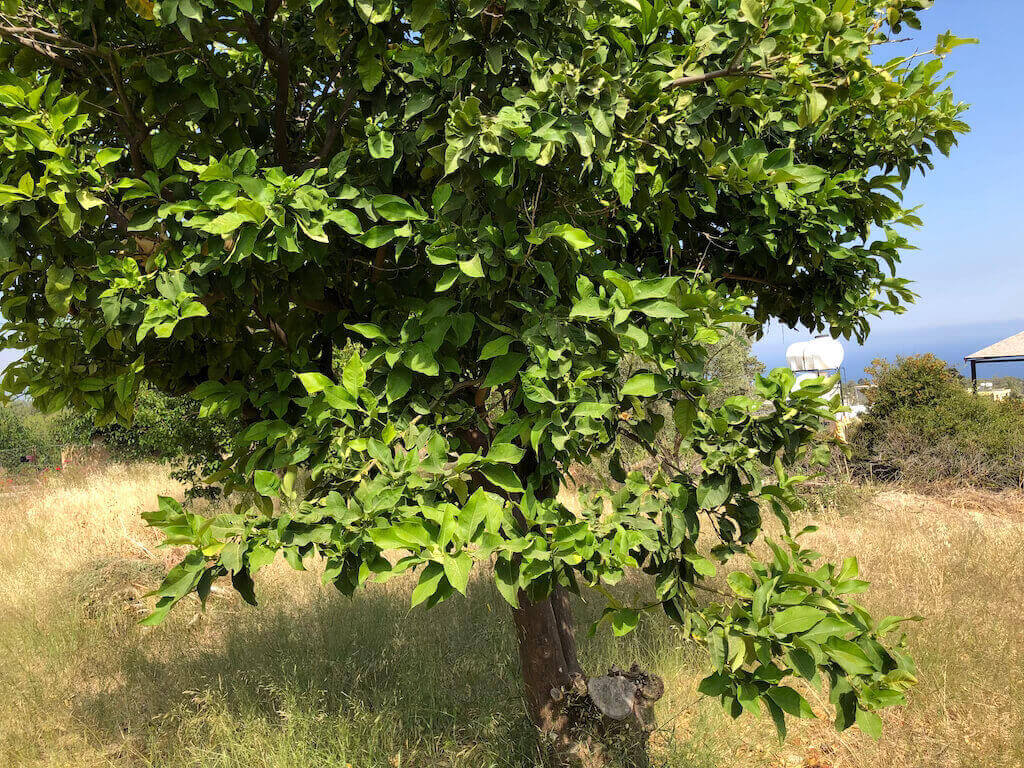I have fruit and pine trees in my garden in North Cyprus. I love trees and strive to maintain them. Pomegranate, lemon, mandarin, apricot and wild very sour orange trees (all lovely, with or without fruits) adorn my garden.
I have been cutting the lower branches so the trees look good and it’s easier to clean underneath them. This year, I discovered something that shocked and saddened me. My trees are very intelligent.
I realized that they lower or grow new branches to cover their trunks from the extreme sun. Their leaves create shade for the upper branches, but their trunks are the most exposed. To protect themselves, they grow lower branches. If they can’t grow lower branches, they lower their upper branches to shade their trunks.
I did some research on this subject and found that I am not alone in thinking and believing that trees have intelligence.

It is a concept that explores the idea that trees and other plants may possess forms of intelligence, communication, and social behaviors. While trees do not have brains or nervous systems like animals, they exhibit several complex behaviors that suggest a form of intelligence. Here are some key aspects:
- Communication:
Chemical Signals: Trees communicate through the release of chemical signals. For example, when a tree is attacked by herbivores, it can release volatile organic compounds (VOCs) that can warn neighboring trees to activate their own defense mechanisms.
Root Networks: Through their root systems and the mycorrhizal networks (symbiotic relationships between fungi and plant roots), trees can share resources like water and nutrients and even send distress signals. - Resource Sharing and Cooperation:
Nutrient Exchange: Trees connected through mycorrhizal networks can transfer nutrients from one tree to another, often supporting weaker or younger trees. This mutualistic relationship is sometimes referred to as the “Wood Wide Web.”
Support for Offspring: Some trees allocate resources preferentially to their own offspring, helping them grow in competitive environments. - Defense Mechanisms:
Induced Resistance: When under attack, trees can produce toxins or other compounds to deter herbivores. This defense response can be heightened in nearby trees through chemical signaling.
Physical Barriers: Trees can develop thicker bark or produce resins and latex to protect against pests and diseases. - Memory and Learning:
Habituation: Studies have shown that plants can exhibit a form of learning known as habituation, where they become less responsive to a repeated stimulus that is deemed non-threatening.
Phototropism and Gravitropism: Trees and plants adjust their growth in response to light (phototropism) and gravity (gravitropism), demonstrating a form of environmental awareness and adaptability. - Environmental Sensing:
Light and Temperature Sensing: Trees can detect changes in light and temperature, adjusting their growth patterns and reproductive cycles accordingly.
Water Sensing: Roots can grow towards water sources, indicating an ability to sense and respond to moisture gradients in the soil.
Notable Studies and Perspectives:
Peter Wohlleben’s “The Hidden Life of Trees”: This book popularizes the idea of tree intelligence by presenting numerous anecdotes and scientific studies that support the social behaviors and communication among trees.
Suzanne Simard’s Research: A forest ecologist known for her work on the mycorrhizal networks, Simard has provided evidence that trees use these networks for communication and resource sharing.
Controversies and Skepticism:
While there is growing evidence supporting the idea of tree intelligence, the concept remains controversial. Some scientists argue that attributing intelligence to trees anthropomorphizes their behaviors and that these behaviors can be explained by simpler biological processes without invoking the notion of intelligence. However, I do believe that trees have intelligence.
Conclusion:
I read that during the Ottoman Empire, woodcutters who were aware of this phenomenon would hide their axes by wrapping them in cloth as they walked through the woodland. This was done to avoid frightening the trees until they reached the one they intended to cut.

Tree intelligence challenges our traditional understanding of intelligence and communication, suggesting that complex behaviors and interactions are not limited to animals. It opens up new perspectives on the interconnectedness and complexity of ecosystems, highlighting the sophisticated ways in which trees and plants interact with their environment and each other.
Leave a Reply